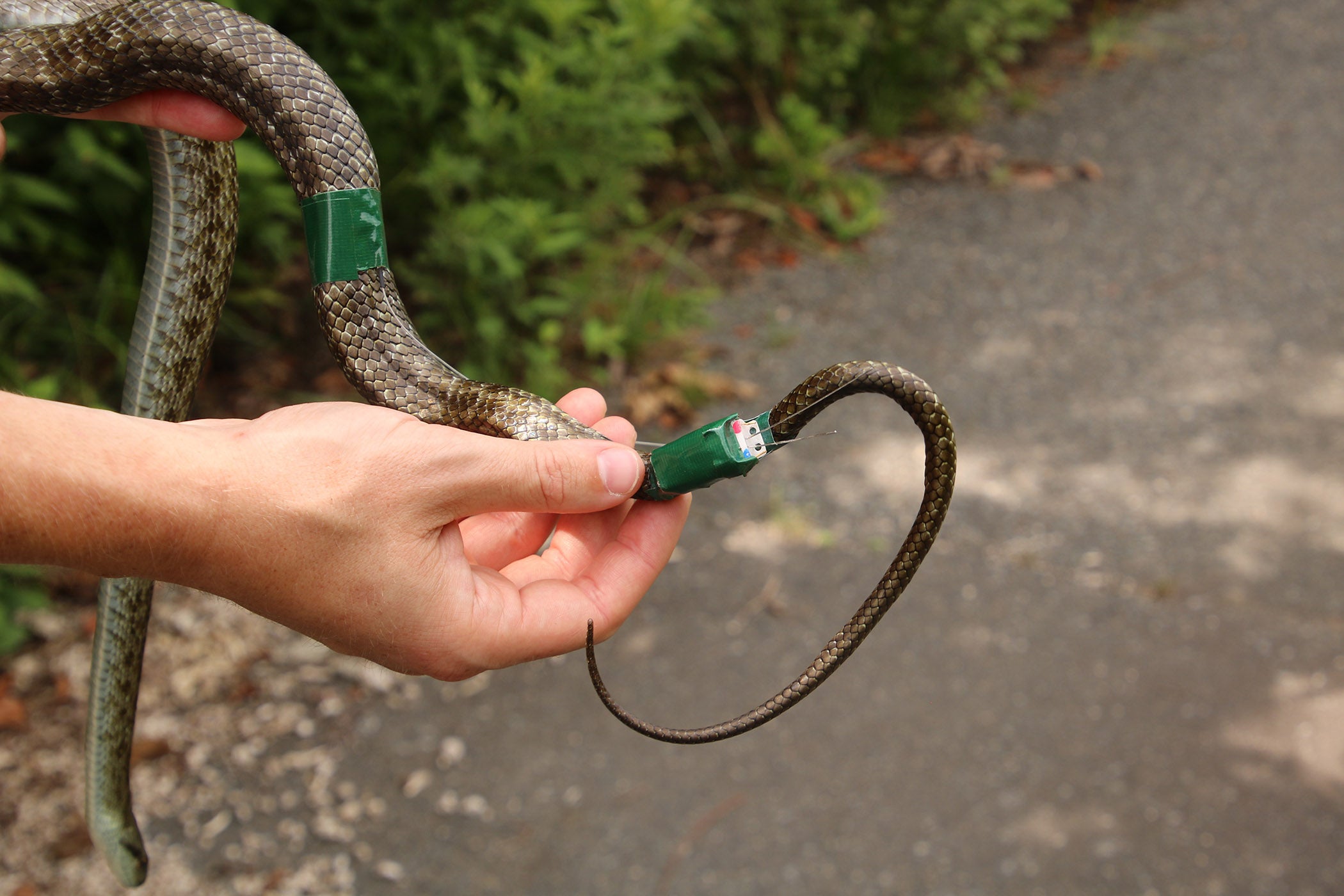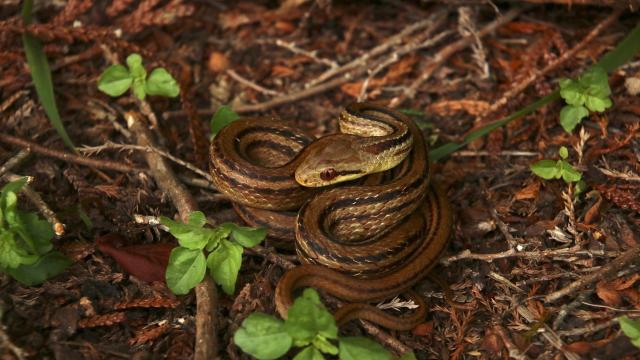Fukushima’s wildlife has been intensely studied since the tsunami and nuclear disaster struck the region a decade ago. But in a new paper, scientists detail how wildlife are being enlisted to monitor the region itself.
In a paper published this month in Ichthyology & Herpetology, researchers chronicle how they’ve set up snakes armed with special equipment to measure radiation levels around Fukushima. The researchers combined these results with their work in another paper they published last year in Environment International that correlated levels of radioactivity in snakes in Fukushima with radioactivity levels in soil to get a better picture of how snakes are responding to radioactivity in their environments.
It may seem strange to focus on snakes out of all the animals in the Fukushima Exclusion Zone, or FEZ — the 1,150 square kilometre area around the reactor where people were evacuated from after the disaster. But snakes are actually a perfect animal to suss out the overall health of an ecosystem in a region where scientists are still trying to figure out the long-term ramifications of the 2011 meltdown and explosion.
“Snakes are often understudied when it comes to other animals, but they are actually a vital part of many ecosystems,” said Hannah Gerke, lead author of the study and a former research assistant at the University of Georgia, in an email. “They can act as both predator and prey in the food web, which means they have the potential to accumulate contaminants from prey they eat and also be a source of contaminants for other animals that eat them.”
What’s more, the main radionuclides that remain in the environment in Fukushima tend to be fixed in the soil — which snakes spend a lot of time slithering around in. “Because snakes spend so much of their time in close contact to soil, we suspected they could build up high levels of contaminants and be exposed to increased amounts of radiation from the soil,” said Gerke.
“We also knew that snakes aren’t as mobile as animals like birds or large mammals, so we expected that might make them more likely to have similar contaminant levels as their surrounding environment.”

The first part of figuring out exposure in snakes was tracking where they were going inside of the FEZ. Radiation inside of the area isn’t consistent, but rather, it varies across habitats and terrain types.
“Where an animal chooses to spend its time can have a significant influence on how much radiation it is exposed to,” said Gerke.
In order to figure out where the snakes were slithering, the team attached GPS transmitters to nine rat snakes, a common species in Japan, which were then let loose in a location around 24 kilometres north of the power plant site and monitored them for a month. The transmitters also had a tiny chip, called a dosimeter, that measured the total radiation dose to the snake over the tracking period. (This marked the first time that dosimeters had been attached to wild snakes.)
During the month-long period the researchers observed the snakes, they logged more than 1,700 sites visited. That gave researchers a lot of valuable information about the snakes’ movements.
“We found that snakes moved relatively small distances and tended to spend more time close to streams, as well as in trees and abandoned buildings,” Gerke said. “Their limited movements mean that snakes could be useful bioindicators – meaning that the contaminant level of the snakes might indicate high or low contamination in the environment where it lives. However, we also found large differences in individual habitat use among snakes, which can lead to variation in radiation doses. For example, a snake that spends the majority of its time in the treetops away from contaminated soil might be exposed to less radiation than one that lives primarily in the ground.”
From the data collected and using research from the 2020 paper, the team estimated that around 80% of the snakes’ dose of radiation during that time came from the soil, trees, and plants they were slithering around while only 20% came from contaminants eaten by the snakes in their prey. Gerke said that the data collected by the comparatively small number of tagged snakes can be extrapolated to make estimates for larger populations in radioactive areas. The jury is still out as to what exactly happens to snakes when they gather up all that radiation — but since they are such useful bioindicator, Gerke said there’s room for many more studies.
“Unfortunately, at this point we don’t have much information about the effects of radiation on snakes,” she said. “Compared to other groups of animals like mammals, we know very little about how chronic radiation impacts reptiles or what levels are harmful to them. Our recent research is meant to draw attention to that lack of knowledge and provide a baseline that helps us determine what levels of radiation snakes might realistically be exposed to as they move throughout their habitat.”
